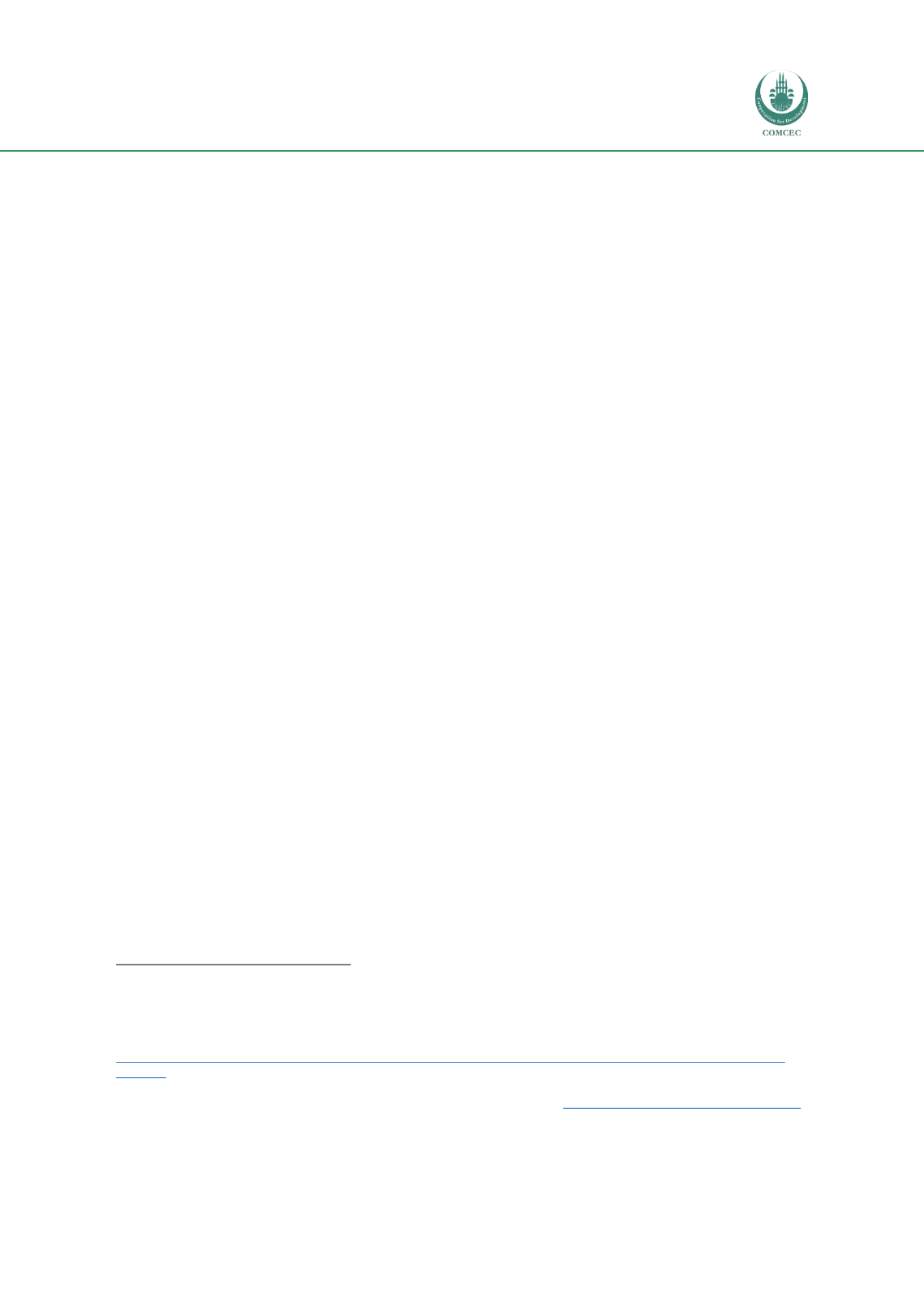

Improving Agricultural Market Performance:
Creation and Development of Market Institutions
131
Indonesia is, however, richly endowed and features among the world’s top producers for a
number of agricultural commodities: palm oil, rubber (second after Thailand), and rice (third
after China and India).
347
Indeed, Indonesia produces considerable amounts of cereals (89.85
million tonnes), followed by oilcrops (36.07 million tonnes), fruits (16.00 million tonnes), and
vegetables (10.24 million tonnes)
348
and features crop production with a high market value
(e.g. cocoa, nutmeg, coffee, and cloves). Opportunities also emerging in fisheries, particularly
shrimp and tuna. However, leveraging these opportunities requires increasing agricultural
production through investment in the country’s agricultural management (at various
Government layers), processing, and marketing system
349
as well as its enforcement
capabilities.
350
Handling and Storage
Storage challenges and poor post-harvest management impede parts of Indonesia’s
agricultural marketing system. This is particularly the case for the horticulture, grain, and feed
sub-sector, where these challenges have led to high moisture content and high aflatoxin levels
of commodities despite increased production levels.
351
In the horticulture sector, the lack of
warehouse and storage capacity leads to decay, while the absence of standardization (e.g.
pineapple, banana, and mango) results in non-compliance with export requirements to larger
consumer markets (e.g. US, EU, Japan, and South Korea), hence reducing market access.
352
The
construction of warehousing and post-harvest facilities should increase public access to food.
The Government of Indonesia has designed a WRS in an effort to mitigate fluctuating
commodity prices. It is supported by Law No. 9/2009 and Law No. 9/2011.
353
This legal
framework stipulates the administrative requirements of the warehouse receipt, the goods
stored in the warehouse, and the rights of the warehouse receipt holder. The WRS is
supervised by the Indonesian Commodity Futures Trading Regulatory Agency (COFTRA). A
total of 117 warehouses had been established by 2014, especially for storing rice, corn, coffee,
and seaweeds. The WRS is challenged as there is no guaranteed farmers’ income during
periods of storage and processing.
354
Processing and Packaging
Indonesia has been going through a process of industrialization, which is also visible in the
agricultural sector as more emphasis is put on agro-processing and agri-business.
355
However,
downstream activities (e.g. processing and packaging) in many of Indonesia’s agricultural sub-
sectors are still underdeveloped. For instance, despite its rubber production, Indonesia
imports large quantities of processed rubber products to meet its domestic demand as the
347
WTO (2013),
Indonesia Trade Policy Review Report by the Secretariat
, Geneva: World Trade Organization.
348
COMCEC (2016), COMEC Agricultural Outlook 2016, pp. 55-90, Ankara: COMCEC.
349
IFAD (2015),
Investing in rural people in Indonesia
, pp. 20-25, IFAD: Rome.
350
WTO (2013),
Indonesia Trade Policy Review Report by the Secretariat
, Geneva: World Trade Organization.
351
USDA (2015), Indonesia Grain and Feed Annual Report 2015, available at
https://gain.fas.usda.gov/Recent%20GAIN%20Publications/Grain%20and%20Feed%20Annual_Jakarta_Indonesia_4-1- 2015.pdf [Accessed June 2017].
352
Interview conducted with Indonesian Agency for Agricultural Research and Development in Jakarta, July 11, 2017
353
FFTC-AP (2015), Warehouse Receipt Scheme Policy in Indonesia, available a
t http://ap.fftc.agnet.org/ap_db.php?id=390[Accessed June 2017].
354
Interview conducted with Ministry of Agriculture in Jakarta, July 13, 2017
355
Interview conducted with BKPM in Jakarta, July 14, 2017


















